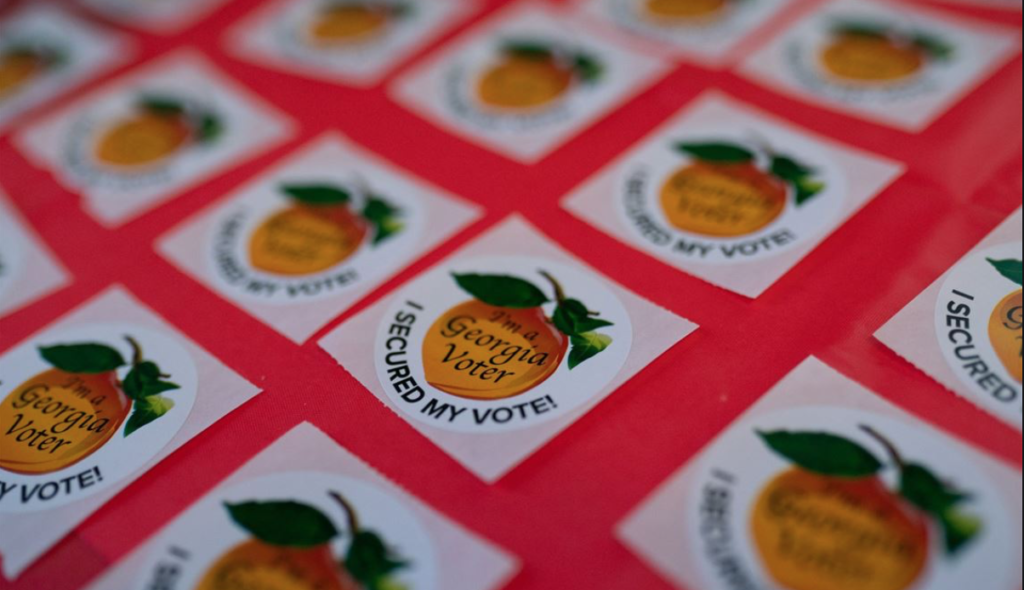A New South: Democratic Victories in Georgia Solidify Its Transformation Into A Political Battleground

Image Courtesy of Pittsburgh Post-Gazette
By Justin Lamoureux
It always seemed unfathomable: A state that had long embodied conservative politics (and evolved into a seemingly solid fixture in the Republican column) shedding its newfound political roots, in favor of an increasingly liberal – if not progressive – alternative. Then, it happened: A series of circumstantial factors and highly constructive strategic ploys thrust Georgia to the center of a hotly contested political universe, and ultimately changed its political leanings from red to blue… or, at the very least, purple.
Increased Democratic strength in Georgia should come as no surprise. Since 2016, the margins of victory in statewide elections have consistently narrowed. That same year, Donald Trump won Georgia by 5.7 percentage points – a noteworthy increase from Mitt Romney’s 8-point victory in the state four years prior.
Tighter margins statewide proved inspiring for many Democratic strategists and donors, who increasingly fixed their sights on the Peach State. The fruits of their labor were hardly instantaneous: In 2018, Republicans held onto the governor’s mansion, despite the formidable (and heavily competitive) candidacy of Democrat Stacey Abrams. Nevertheless, the party further eroded Republican performance statewide; Governor Brian Kemp won the race by a mere 55,000 votes, or less than two percentage points.
Last November, a long awaited culmination of the state’s leftward trend materialized; President Joe Biden made significant electoral inroads when he carried Georgia by less than 12,000 votes (a margin of 0.2 percent). This Democratic bent was solidified two months later, when Reverend Raphael Warnock and Jon Ossoff picked up both of the state’s U.S. Senate seats in a runoff election.
Needless to say, these were groundbreaking victories for Democrats. It was not a matter of luck, though: A number of demographic trends have fueled the party’s meteoric rise in Georgia. Over the last three decades, racial minorities have increased their percentage of the state’s residents by over fifteen percentage points. In 1992, 30.9% of Georgia’s population was nonwhite; today, that figure stands at 46.4%. The three largest non-white demographics in the state – African Americans, Latinos and Asian-Americans – all tend to favor Democrats by substantial (if not overwhelming) margins.
(Image Courtesy of New York Times)
In terms of how these demographic shifts played out among the electorate itself, comfortable gains among high-income residents, college graduates (though a solid majority of white college graduates still voted Republican), suburban voters and voters over the age of 65, all proved critical to Democrats’ gains in the state. Their gains among demographics which remain solid
elements of either party’s base – such as rural or African-American voters – were far less pronounced.
Democrats may have recruited an army of new voters (and groups) across Georgia to make their recent victories possible, but many argue that such gains would not have come to pass without the efforts of one individual: Stacey Abrams. After falling short in the state’s most recent gubernatorial race – amidst concerns that several irregularities plagued the election results – Abrams started Fair Fight Action, a grassroots organization which “engages in voter mobilization and education activities,” and “has mounted significant programs to combat voter suppression in Georgia and nationally.”
In the last two years, Fair Fight has registered over 800,000 new voters in Georgia – 200,000 more than state preliminary records suggest were enlisted overall during this time. In her voter outreach efforts, Abrams prioritized connecting with demographics that traditionally have registered in low numbers, including younger and non-white residents. This is a considerable departure from tactics employed by Democrats in Georgia for much of the past decade, which included catering to older, white voters who had drifted towards the GOP in droves.
Another staple of Abram’s political strategy was ensuring an effective digital outreach. In the days leading up to the runoffs, Fair Fight texted 2 million voters with instructions for obtaining absentee ballots – 80% of Biden’s total vote share in the state in November.
Enhanced voter outreach was certainly Abrams’ most valuable contribution to Democrats’ ground game in Georgia, but her grassroots fundraising initiatives were equally effective. Abrams raised more than $34.5 million for the senate runoffs, relative to the $222 million raised by Democrats overall. Republican candidates, in comparison, raised only $144 million.
Now that Democrats have shattered the glass ceiling with statewide victories in Georgia, the question looming over everyone’s heads is what the state’s political future might entail. For starters, it seems unlikely that Georgia will become a solid fixture of either party’s electoral firewall anytime soon. Aforementioned demographic changes and stronger mobilization efforts certainly give Democrats reason for optimism about their future prospects in Georgia, but the state retains an ideologically conservative bend.
Looking ahead to the next election cycle: Newly-elected Senator Raphael Warnock is up for reelection to a full term. In this case, conventional wisdom regarding the forecasted outcome is fraught with ambiguity; traditionally, midterm elections are not kind to the incumbent party. At the same time, however, Warnock will have the advantages of the incumbency; this includes ample time for both fundraising and organization. In a competitive race, this could give him an advantage.
Let’s talk about the governor’s race. Having become a “household name” in national politics, Stacey Abrams appears poised for a rematch with Governor Brian Kemp in 2022. But while more Democratic voters have been mobilized since her last candidacy, Republicans also have potential advantages; Former Senator Kelly Loeffler (who was defeated in her respective election by Raphael Warnock) has already started a PAC called “Stop Stacey,” which is dedicated to soliciting donations for Republican gubernatorial candidates. What’s more, Republican legislators in Georgia have also proposed legislation that would completely overhaul the state’s current voting laws. This could potentially make it harder for some of Abrams’ newly galvanized supporters to vote, and effectively jeopardize Democratic turnout.
On the flip side, Brian Kemp’s favorability ratings have decreased since November, and it remains unclear whether that trend will continue moving forward. Recent polling estimates his approval at 46% overall, with just 77% of Republicans – compared to 86% prior to the election – approving of his job as governor.
Ultimately, Kemp’s prospects for re-election could hinge on whether he manages to survive a primary challenge – speculation has ensued that Trump loyalists are searching for a replacement candidate – and whether the party’s ideological fringe (dominated by figures like Congresswoman Marjorie Taylor Greene) become too much of a liability.
Over the next few years, Republicans’ primary litmus test in Georgia will epitomize their nationwide dilemma: Can they maintain a viable level of enthusiasm among the base without Trump’s name on the ballot? This notion is grounded in factual evidence; in November, David Perdue won a plurality of votes with Trump on the ballot. But in the runoff, without Trump’s electoral presence, Perdue lost. For Democrats, the main question is whether the incentive for voters to cast their ballots is equally strong in Trump’s absence. Another factor to watch: Does support for the party among moderate swing voters – or in suburban districts where contempt for Trump was especially strong – expand or erode in the coming years?
Regardless of which direction Georgia takes, its tenure as a key battleground state is only getting started. In a political climate where polarizing mainstreams, tight elections and slim majorities have become the norm, the stakes could not be higher. Each party has a lot weighing on this state, and how things play out here could offer a premonition of how the entire sunbelt region could ultimately trend. The future of American politics has never appeared to be less certain, but make no mistake – Georgia is very much a purple state.







